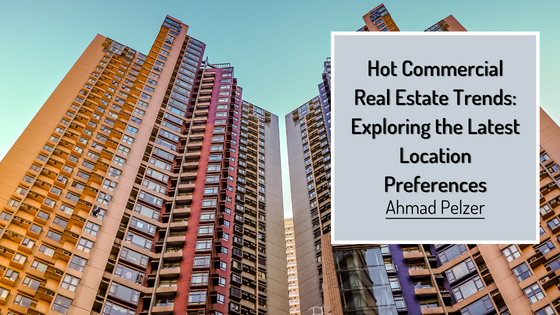As businesses evolve and consumer preferences shift, new location trends are emerging that investors and developers must be aware of. Here are the latest location preferences in commercial real estate, providing insights into the industry’s hot trends.
Urban Revitalization:
Urban areas are experiencing a renaissance as businesses and residents seek vibrant, walkable communities. Revitalizing downtown areas and urban cores has become a hot trend in commercial real estate. Mixed-use developments that blend office spaces, residential units, retail outlets, and entertainment options are in high demand. Proximity to amenities, public transportation, and cultural attractions drive businesses and residents back to the city centers.
Suburban Resurgence:
While urban revitalization is rising, suburbs are also experiencing a resurgence in commercial real estate activity. Many companies choose suburban locations for lower costs, ample parking, and more spacious office spaces. Suburban areas also attract mixed-use developments, creating live-work-play environments similar to their urban counterparts. Proximity to residential neighborhoods and a quieter atmosphere appeal to businesses seeking a balance between accessibility and tranquility.
Transit-Oriented Development:
Transit-oriented development (TOD) has gained significant popularity with increasing concerns about traffic congestion and sustainability. TOD focuses on creating commercial and residential spaces near public transportation hubs. Businesses and developers recognize the benefits of easy access to trains, buses, and subway systems, attracting a larger pool of potential customers and employees. TOD locations offer convenience, reduce car reliance, and contribute to a greener, more efficient transportation network.
Innovation Districts:
Innovation districts are becoming highly desirable locations for commercial real estate investments. These districts bring together research institutions, startups, technology companies, and creative industries close. Innovation districts foster collaboration, knowledge sharing, and the development of cutting-edge technologies. Businesses are attracted to these locations due to the potential for partnerships, talent acquisition, and access to research and development resources.
Mixed-Use Developments:
Mixed-use developments continue to gain popularity, offering a blend of residential, commercial, and retail spaces within a single project. These developments create vibrant communities where people can live, work, and play without requiring extensive commuting. Mixed-use projects often feature walkable streets, green spaces, and various amenities, providing convenience and enhancing the quality of life.
Environmental Sustainability:
Environmental sustainability is becoming a prominent factor in location preferences. Businesses are increasingly seeking eco-friendly buildings and environmentally conscious neighborhoods. Commercial real estate properties with green certifications, such as LEED or BREEAM, are highly valued. Locations with access to renewable energy sources and sustainable infrastructure, such as bike lanes and electric vehicle charging stations, are also in high demand.
Understanding the latest location preferences in commercial real estate is essential for investors and developers to identify lucrative opportunities. Urban revitalization, suburban resurgence, transit-oriented development, innovation districts, mixed-use developments, and environmental sustainability are key industry trends. By staying informed about these location preferences, stakeholders can make informed decisions and capitalize on the evolving needs of businesses and consumers. Embracing these hot trends will attract quality tenants and contribute to creating vibrant and sustainable communities that drive long-term value in commercial real estate investments.
